Today I’m going to discuss a sensitive subject. I want to be very clear about where I’m coming from and what I’m talking about. I’m going to talk about how I would manage a banned list for cEDH, from the perspective of attempting to maintain a healthy competitive format. People get sensitive around discussions about banning cards because it can have serious financial ramifications, or it might just not let someone play a deck or card they love playing. I’m not calling for any card I discuss to be banned, and I’m not suggesting that any format–casual or competitive EDH–should be handled differently than it is. Rather, I’m using this framing to discuss the roles of some cards in the format.
No one is coming for your guns
Or toys, or whatever metaphor you like.
Further, before I get into this, I should comment on why I’m not asking for any of these to be banned.
A lot of players take issue with the decisions the Commander Rules Committee makes. That’s inevitable no matter what decisions they make; you can’t please everyone. There’s a good chance they haven’t made 100% of the best possible decisions about how to run the format–again, there are just too many decisions, even if they’re very good at making decisions, they’re bound to get something wrong at some point. They have no real way of knowing how any decision they make would have played out if they’d gone another way. At then end of the day, they maintain a format that has succeeded beyond realistic expectation, so I think they deserve some level of trust.
Beyond that, I think that their decisions, even ones I disagree with, generally make some kind of sense for their goals.
Their decision is to make decisions that they believe are best for the people who play the format casually, roughly in line with the way they recommend playing the game. Which is to say, approaching the format in a way where players aren’t treating their own victory as their top goal.
The cEDH Diffierence
cEDH players have chosen to play with the rules of casual EDH despite knowing that those rules aren’t intended for them. There are other rules sets they could use, and they choose not to. One might argue that that’s because only the official EDH list has the weight and recognition to effectively govern everyone even if it’s not preferable. But, one might also suspect that the power level it allows is part of its charm. It may not allow literal power, but a lot of the strongest cards in the format certainly give it a feeling similar to Vintage. If you ban the 10-100 cards which are shadow banned in casual EDH to force cEDH players to play decks that are at the power level of regular cEDH, those of us who are just looking for any multiplayer format that we can approach competitively would maybe be served well. But, people who like cEDH specifically because it allows wildly explosive turns might not enjoy the format as much.
I suspect I could make a relatively balanced competitive format that plays more similarly to casual EDH by banning every card that I’ve excluded from my Casual Commander Cube for being too strong, which would be an incredibly long banned list featuring any card that costs 2 mana or less and taps for 2 mana or more (including lands), any card that can search a library, banning half of every two card game winning combo, and several other power level outliers. Again, it would be an unrealistic list, but it’s not impossible. I also happen to think that format would be fun, but I don’t think it would catch on, and it wouldn’t want to try to modify an existing format to get there rather than launching it as its own different thing.
If I’m talking about which cards could be banned to balance cEDH, I’m assuming the goal is to ban the smallest number of cards. I’m assuming the goals are increasing format diversity, decreasing variance in the sense that drawing certain cards makes the player who drew them far more likely to win than players who didn’t. “Improving gameplay,” is a subjective term, but mostly involves minimizing the number of games that end in a way that feels like players have very little agency, which I see as the biggest problem with Thassa’s Oracle, for example.
My goal is to structure this as an ordered list where you can take any number of steps and each one bans the next card that should be banned. How far you go is just a question of where you think you stop getting good returns on improvement to the format.
So, let’s get to the list:
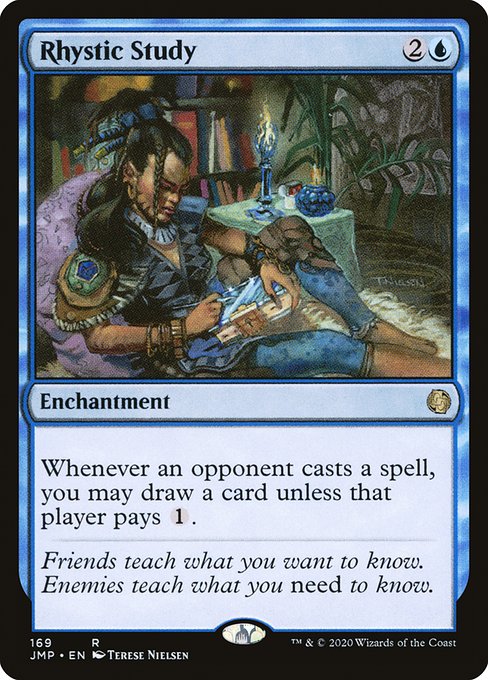
#1 Rhystic Study
I don’t think this is necessarily the strongest card in the format, but I think it has a lot of problems and few redeeming qualities. It’s blue, which is probably the strongest color, so I’d want to start by hitting a blue card. Honestly, color balance itself is the reason I have this in number one–I think the best red cards are individually stronger and more problematic, but I also feel like red needs a reason to exist that those cards provide, and blue really doesn’t.
Rhystic Study is very powerful regardless of how other players choose to play against it, it’s also kind of slow and tedious to resolve, as it adds a step to every resolution, especially in a tournament setting where players might want to wait to see if the player controlling the Rhystic Study remembers their trigger before offering up the mana, creating extra priority passes on every spell.
Unlike Mystic Remora it doesn’t only punish certain kinds of decks, it doesn’t force an interesting decision on the person who played it (whether to pay the upkeep), and it doesn’t naturally remove itself at some point. Where other cards on this list might be stronger, I think they generally add something interesting to the format, and I don’t think Rhystic Study does that.

#2 Mana Crypt
I think it’s absurd that Mana Crypt was ever legal. Sol Ring was always a central conceit of the format. Everyone has a Sol Ring and it’s fun to get to play with it. Also, it lets players play more expensive spells, and the format is about playing more expensive spells.
The Alpha Moxes were banned because there was a perception that if players saw moxes in play and they didn’t own them, they’d assume the format was inaccessible–they’re not banned for power level, just to help the format grow. To be clear, I think that was a great decision. Mana Crypt is more powerful and was comparably rare–realistically at the time it had the same impact that playing a Mox would, but it had less notoriety, so it wasn’t expected to get the same reaction. As it turned out, it also wasn’t on the reserve list, which helped a lot with accessibility.
A big part of the problem with Mana Crypt in the early days of EDH was it created a clear gap between the haves and the have-nots. If you own a Mana Crypt and the format tells you it’s appropriate to play Sol Ring, why wouldn’t you also play Mana Crypt? These days, I suspect more casual EDH players know not to play it unless they know the rest of their group also plays it.
In cEDH, I assume everyone has the card or that they’re playing in a context that allows proxies, but I don’t think “Sol Ring, but it’s stronger and also somewhat high variance, in a way that mostly doesn’t matter and just wastes time” is a card that makes the format better.
I also think that Mana Crypt exacerbates the issue with Blue being the best color–specifically, opening hand with Mana Crypt and Rhystic Study or Mystic Remora are just an entirely different class of broken from hands with those cards that don’t have Mana Crypt, but more broadly, blue is the best color at drawing extra cards and the worst color at making extra mana, so Mana Crypt helps blue more than it helps other colors.

#3 Dockside Extortionist
I really don’t like banning a red card from a color balance perspective, as I mentioned above, but this card is absurd. It gets by because you can pretend this only punishes “greedy” players who feed it, but that’s simply not true–Dockside doesn’t attack artifacts or enchantments, it just rewards the caster. This means if a player chooses to build their deck to make opposing Docksides worse, they’ll be about as likely to lose to it as they would be if they didn’t do that because it’ll usually make enough mana from the rest of the table anyway.
Played as a ritual, this already arguably the best legal mana source, but the body means it’s also a trivially easy combo piece.
The comparison between Dockside Extortionist and Primeval Titan is the best evidence to me that the banned list isn’t about applying consistent principles to each card–it’s a historical document that lists cards which have caused problems in a certain kind of game play at a certain point in the past.
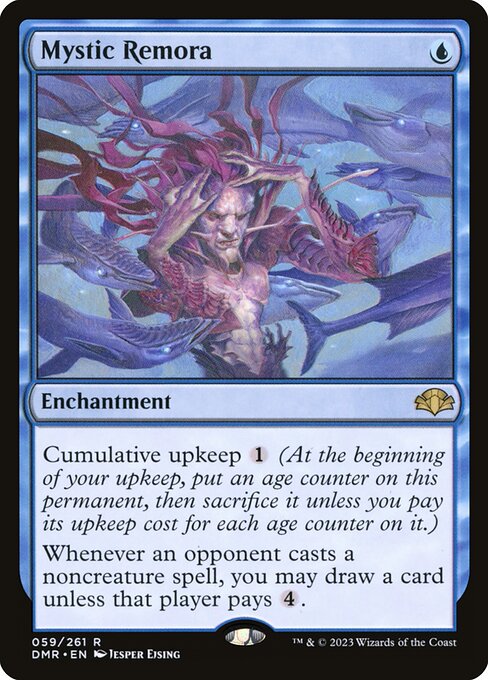
#4 Mystic Remora
I think this isn’t as bad as Rhystic Study for the reasons I listed above, but I’m not convinced it’s less powerful, just that it has more redeeming qualities. It still has most of the problems Rhystic Study has, including heavily warping the format toward blue decks.
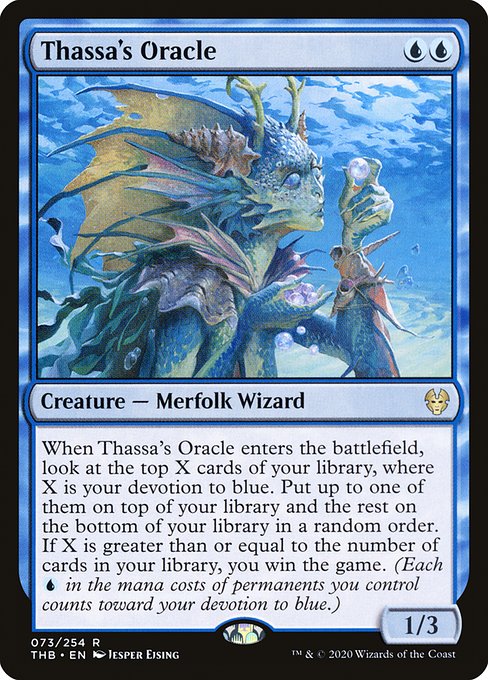
#5 Thassa’s Oracle
I don’t think Thassa’s Oracle is anywhere near the 5th strongest legal card, but I do think the gameplay around it is largely unsatisfying. It’s another huge offender when it comes to blue’s metagame share. Making it harder for blue to end a game seems very appropriate.
This is a format where Biorhythm is banned because “win the game” shouldn’t be that easy.
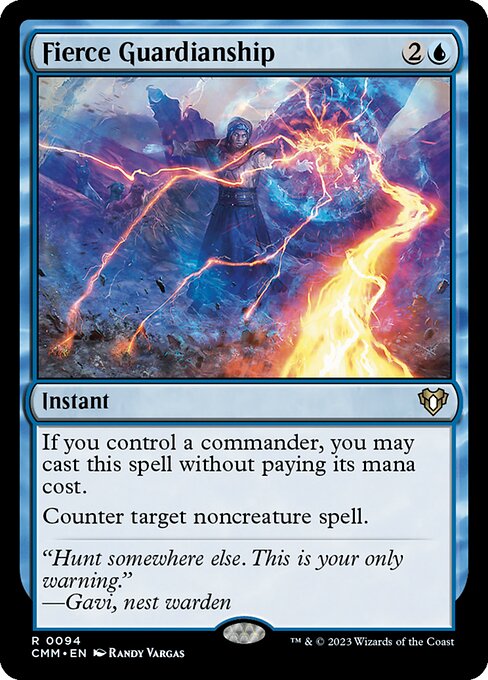
#6 Fierce Guardianship
I actually hate suggesting removing a free counterspell because I think they’re really important to making games fun by making them last longer than four turns, because players can interact with each other. In that way, I actually think this card does a lot to improve gameplay, but I also absolutely hate everything else about it. It’s a huge power boost both to blue and to cheap commanders, neither of which are things that need extra power.
This is the card I feel most biased about–like I want to ban it because I think it’s just an offensive design, a way for WOTC to print a card they can definitely sell because it’s unreasonably powerful but that definitely won’t ruin any competitive constructed format because it doesn’t work there. This is the worst kind of “designing for Commander” and I wish it didn’t exist.

#7 Underworld Breach
Again, I really like giving red some cards that are good enough to make players want to play red. However, I don’t think cards that win the game for 2 mana are the right way to do it. I think this one has slightly more interesting counterplay and requires more setup, but it’s still an egregious power level outlier.
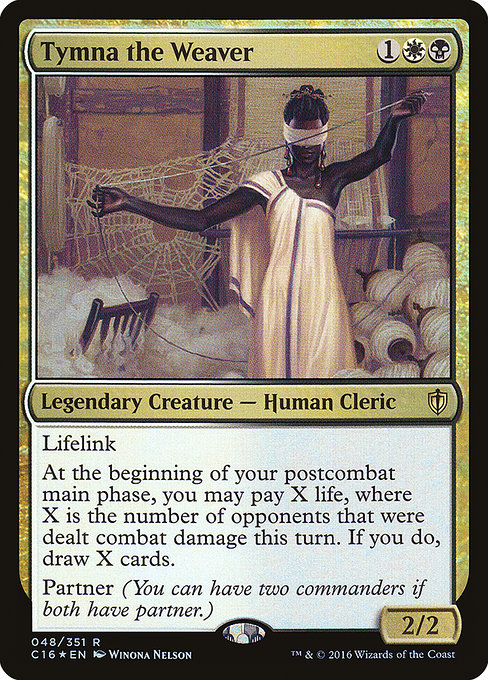
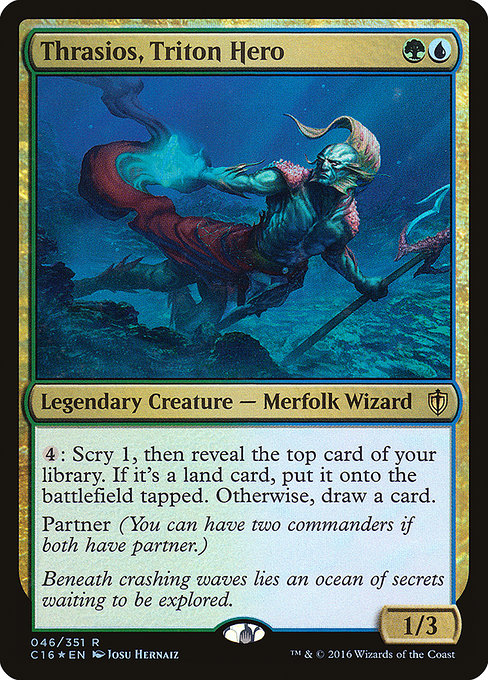
#8/9/+ Tymna, the Weaver. Thrasios, Triton Hero
Making gold partners was a mistake. Making cheap gold partners that provided a steady stream of card advantage or infinite mana outlet in the command zone was absurd. There are a lot of decks where it might be interesting to find the right commander for a color group or strategy, but really, the best strategy is just one of these and a partner that has whatever other colors you want, and these decks lack any interesting identity.
If you wanted to go a step further and ban every multicolor partner, I think that’s entirely reasonable, but these two are on an entirely different level than the rest.

#10 Sol Ring
I could take or leave a Sol Ring ban. If we treat “sometimes players get a thrill of having a particularly explosive start” as a strong positive in the good gameplay column, I think competitive integrity can handle the swings this creates. The average game is probably better if Sol Ring isn’t legal, but the fact that decks play out very differently when they draw Sol Ring is a pretty big win in terms of diversity of game play experiences, especially when players are playing with or against the same decks a lot. B1etween that and chasing the highs offered by a good Sol Ring draw, it’s not that hard to argue that it’s positively contributing to the format.
Sam Black (any) is a former professional Magic player, longtime Magic writer, host of the Drafting Archetypes podcast, and Twitch streamer. Sam is also a Commander Cube enthusiast, and you can find Sam’s cube list here. For anything else, find Sam on Twitter: @SamuelHBlack.

